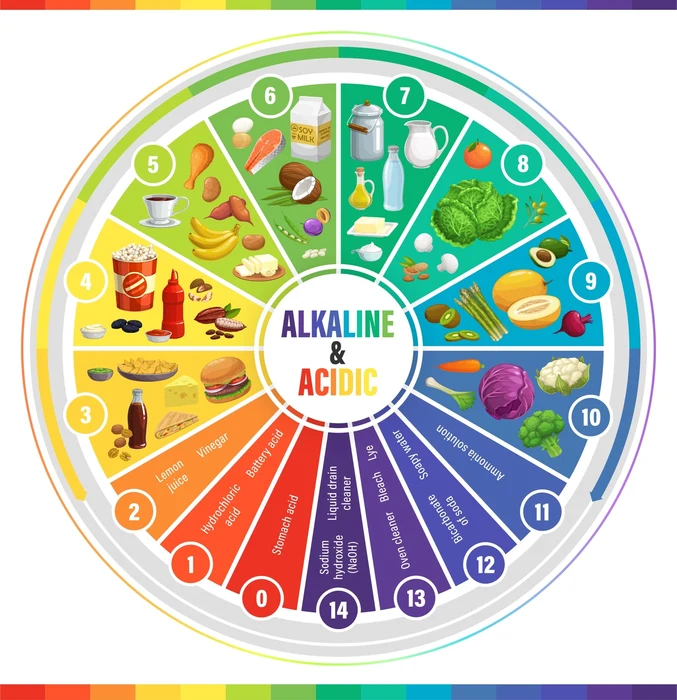Introduction
Acids and bases have been defined many times and in many ways. Numerous scientists have suggested various definitions for acids and bases, some of which are highly specific and others of which are quite broad. We come into contact with acids and bases on a daily basis. Except for water, every liquid we used had acidic or basic properties, such as vinegar (acetic acid), soft drinks (carbonic acid), buttermilk (lactic acid), and soap (contains base). The initial definitions were based on the flavour of the substance and how it interacted with other substances.
Ionization of Acids
The degree of ionization is a measure of the acidity or baseness of an acid or base. A strong acid completely ionizes in water, whereas a weak acid only partially ionizes. Because acids have varying degrees of ionization, they also have varying degrees of weakness that can be quantified. The ionization of a weak acid is an equilibrium process.
\[HA{\rm{ }}\left( {aq} \right){\rm{ }} + {\rm{ }}{H_2}O{\rm{ }} \to {\rm{ }}{H_3}{O^ + }\left( {aq} \right){\rm{ }} + {\rm{ }}{A^–}\]
\[{K_a} = \frac{{[{H_3}{O^ + }][{A^ – }]}}{{\left[ {HA} \right]}}\]
The Acid Ionization Constant is defined by the Equilibrium Constant for the Ionization of an Acid \({K_a}\). The higher the acid ionization constant, the stronger the acid. As a result, a strong acid donates more protons than a weak acid. Because the concentration of the product is in the numerator of the Ka constant, the larger the acid ionization constant, the stronger the acid \({K_a}\).
Ionization of Bases
Strong bases are bases that completely dissociate into their ions in an aqueous solution, such as lithium hydroxide or sodium hydroxide. As a result, the ionization of these bases produces hydroxyl ions, which are represented by the symbol \(O{H^ – }\).
\[B{\rm{ }} + {\rm{ }}{H_2}O{\rm{ }} \to {\rm{ }}O{H^–} + {\rm{ }}B{H^ + }\]
\[{K_b} = \frac{{[O{H^ – }] + [B{H^ + }]}}{{\left[ B \right]}}\]
\({K_b}\) is the abbreviation for the equilibrium constant for base ionization. As a result, a strong base indicates that it is a good proton acceptor, whereas a strong acid indicates that it is a good proton donor. Weak acids and weak bases dissociate in water as follows:
\[C{H_3}COOH{\rm{ }} + {\rm{ }}{H_2}O{\rm{ }} \mathbin{\lower.3ex\hbox{$\buildrel\textstyle\leftharpoonup\over{\smash{\rightharpoondown}}$}} {\rm{ }}C{H_3}CO{O^ – } + {\rm{ }}{H_3}{O^ + }\]
\[N{H_3} + {\rm{ }}{H_2}O{\rm{ }} \mathbin{\lower.3ex\hbox{$\buildrel\textstyle\leftharpoonup\over{\smash{\rightharpoondown}}$}} {\rm{ }}N{H_4}^ + \left( {aq} \right){\rm{ }} + {\rm{ }}O{H^ – }\left( {aq} \right)\]
Neutralization Reaction
When an acidic solution is treated with an alkaline solution or aqueous solution of a metal oxide, a salt is formed, and the solution becomes neutral. A neutralization reaction occurs when \({H^ + }\)ions from an acid combine with \(O{H^ – }\)ions from the base of a metal oxide.
The chemical reactions shown below demonstrate the formation of salt.
\[HCl{\rm{ }} + {\rm{ }}NaOH{\rm{ }} \to {\rm{ }}NaCl{\rm{ }} + {\rm{ }}{H_2}O\]

\[{H_2}S{O_4} + {\rm{ }}Ca{\left( {OH} \right)_2} \to {\rm{ }}CaS{O_4} + {\rm{ }}2{H_2}O\]
Summary
The term “ionisation degree” also refers to the proportion of neutral particles in aqueous or gaseous solutions that are ionised to form charged particles. It could be defined as an acid’s or a base’s ability to ionise itself in electrolytes. A low degree of ionisation is sometimes called partially or weakly ionised, while a high degree of ionisation is called fully ionised. However, a fully ionised state can also indicate that an ion has used up all of its electrons.
Arrhenius’ theory states that an acid is a substance that dissociates in an aqueous medium to produce hydrogen ions. A base, on the other hand, is a chemical that produces hydroxyl ions in an aqueous medium. Arrhenius’ hypothesis is especially important in understanding acid and base ionisation. This is because ionisation occurs frequently in watery media. The degree of ionisation of an acid and a base can be used to determine their strength.
Frequently Asked Questions
1. What do you mean by the Ionisation of acids and bases?
Ans. The degree of ionisation is proportional to the acid or base strength. A strong acid or base is said to completely ionise in water, whereas a weak acid or base is said to partially ionise.
2. Why acids are considered the opposite of bases?
Ans. As acids increase the concentration of hydronium \({H_3}{O^ + }\) in the water while bases decrease it, acids and bases are considered opposed. The reaction between an acid and a base is referred to as “neutralisation.”
3. What effect does ionisation have on pH?
Ans. The concentration of \({H^ + }\)ions and thus the acid’s strength are determined by the extent of dissociation (or ionisation). As a result, the degree to which an acid dissociates or ionises is proportional to its acidic strength (stronger acids have lower pH values).
 Mission Statement
Mission Statement
“Empower every student to achieve full potential”
88Guru has been established with the social objective of making quality video-based learning material available to all Indian students. Technology, Connectivity and Social Media are rapidly changing the world of Education and we wish to lead the transformation of the tuition industry in India.
88Guru is the perfect complement to the current tuition model. 88Guru creates a wonderful opportunity for children and parents to bond while engaging in a valuable learning activity. It also provides the complete curriculum at your fingertips for those moments when you need some help at short notice. We believe that this mode of tuition could be transformational, adding hours to a child's day while providing complete control over the learning process.
Every course is taught by the best teachers from India's top schools and conducted in an engaging manner to keep students involved. The e-learning process consists of video-based instructions, computer-graded assignments, and a dashboard which allows the student and parent to track progress.


